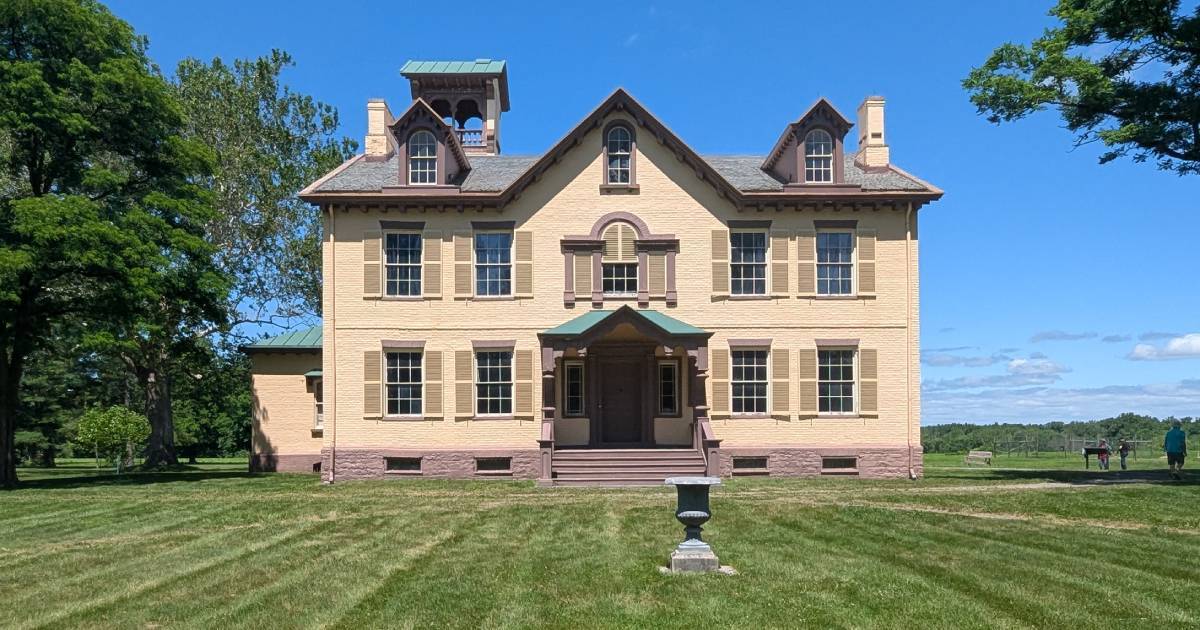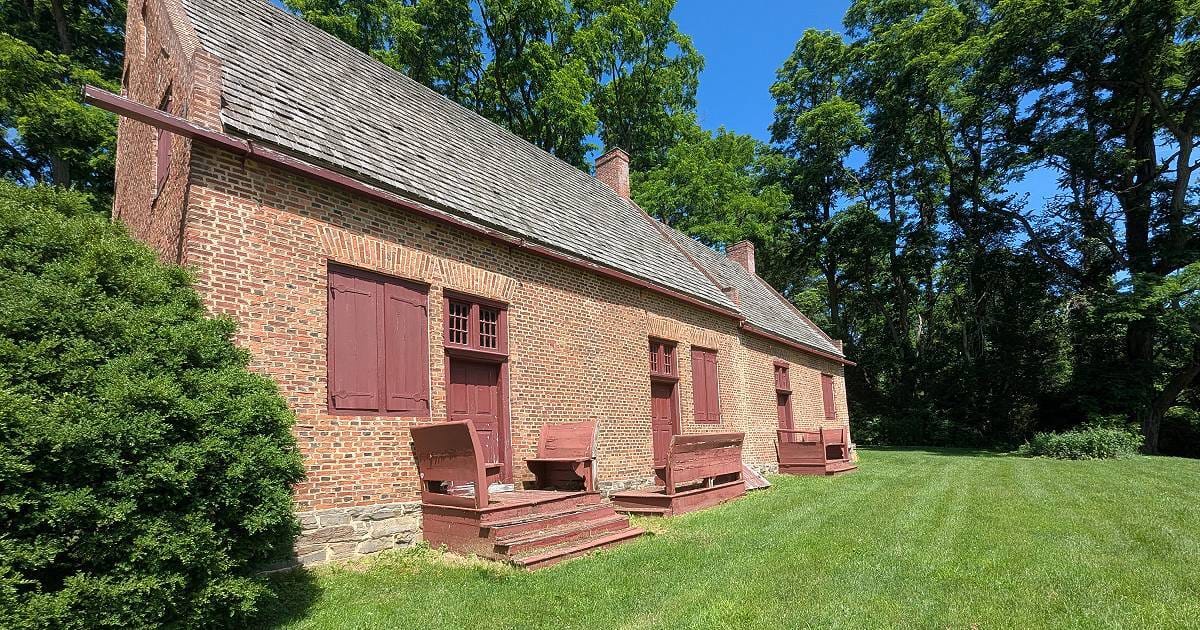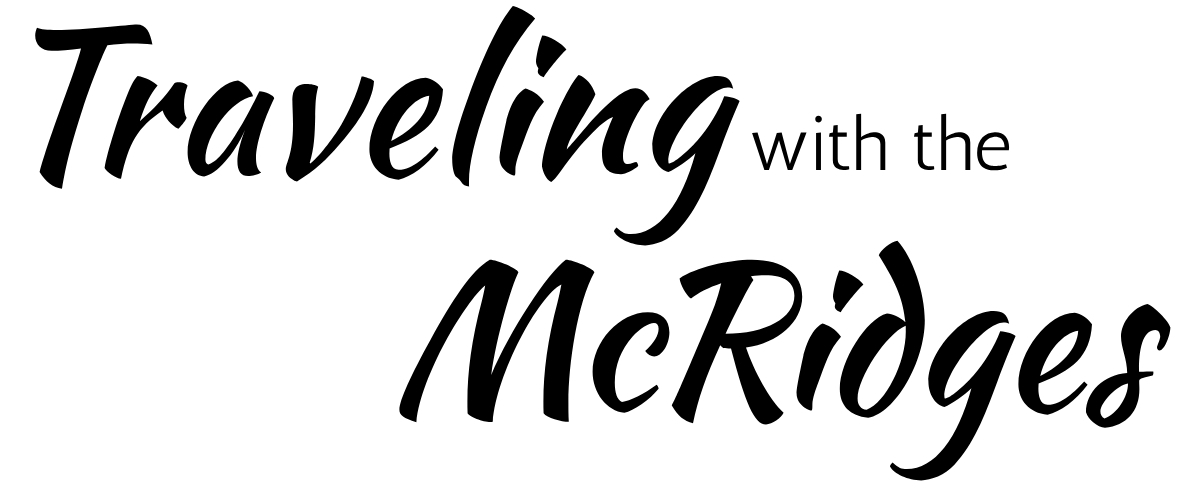The Village of Kinderhook (Dutch for “children’s corner”) has a rich and layered history. Long before Dutch settlers arrived in the 1660s, this land was home to the Muh-He-Con-Neok—“the People of the Waters that Are Never Still”—known to the English as the Mohicans. The arrival of European settlers brought profound change to the region, and over time, Kinderhook grew into a significant stop along early American routes.
During the Revolutionary War, Kinderhook became a major thoroughfare. Afterward, it continued to thrive as a postal and stagecoach hub between Albany and New York City. These connections helped it evolve into a bustling commercial, manufacturing, and social center filled with shops and taverns. By the 19th century, manufacturing declined, and today the village is mostly residential—with a few remaining historic homes and markers waiting to be explored. This week, I’m sharing details on three sites we recently explored.
KINDERHOOK, NY
Martin Van Buren House

Front of Martin Van Buren House
Martin Van Buren was born, raised, and later returned to Kinderhook after serving as the 8th President of the United States (1837–1841). His parents were farmers who also ran a tavern out of their home. He went to school in Kinderhook and began his legal career at just 14, working as a clerk for attorney Francis Silvester. He opened his first law practice—also in Kinderhook—in 1803. He married his childhood sweetheart, Hannah Hoes, and they had four sons. (Sadly, she died in 1819, and Van Buren never remarried.)
His political career took off in 1812 when he became a State Senator, then Attorney General. In 1821, he was elected to the U.S. Senate, and later served briefly as Governor of New York before becoming Andrew Jackson’s Secretary of State. During Jackson’s second term, Van Buren served as Vice President. In 1836, he won the presidency, but due to an economic downturn, he wasn’t elected to a second term.
Afterward, he returned to Kinderhook and purchased his estate, where he lived until his death in 1862. Today, the site is a National Historic Site. You can walk the grounds and nature trail from sunrise to sunset. To tour the interior of the house, you’ll need to join a scheduled tour—times vary and registration is first come, first served at the Visitor Center.

Small building on the Martin Van Buren property.
Ichabod Crane Schoolhouse & Luykas Van Alen House
Just a few miles north of the Van Buren estate, you’ll find the Ichabod Crane Schoolhouse and the Luykas Van Alen House.
Children attended the schoolhouse from 1850 to 1944. One teacher handled all grade levels and wore many hats—teacher, principal, nurse, even art and music instructor. Often, the teacher would board with a local family. The building later became a community center, which Eleanor Roosevelt visited in 1952. It closed in 1962 and was turned over to the Columbia County Historical Society for preservation.
Why the name “Ichabod Crane”? Washington Irving’s character from The Legend of Sleepy Hollow was inspired by Jesse Merwin, a schoolteacher in Kinderhook. Martin Van Buren was friends with both Merwin and Irving, and even confirmed that Merwin inspired the fictional Crane. Eventually, the school district adopted the name Ichabod Crane School District, and this schoolhouse was renamed to match.

Ichabod Crane Schoolhouse with view of Van Alan House in the distance.
On the same property, you can visit the Luykas Van Alen House, built in 1737. This large Dutch Colonial home belonged to the Van Alen family for generations and was part of a working farm until 1935. (It’s important to note that before 1827, enslaved people lived and worked here too.) Martin Van Buren often rode past this property on his travels into the village.
The grounds span 33 acres and include historical panels throughout the site. The house itself is currently closed until July 5th, according to the website, but it remains one of the few well-preserved examples of Dutch Colonial architecture in the Hudson Valley.

Luykas Van Alen House
Kinderhook was a rewarding stop! I hope you agree!
I loved diving into Kinderhook’s layered history—from its earliest Indigenous roots with the Muh-He-Con-Neok (Mohican) people, to the colonial era, and into presidential and literary connections. If you'd like to learn more about the Stockbridge-Munsee Mohican Nation, who now reside in Wisconsin and continue to preserve their heritage, you can visit their website here.
I wonder what other charming corners of the Hudson Valley I'll discover next.
‘til next week, happy exploring!
Kathleen
Check out Beehiiv. Click below for free 30-day trial + 20% OFF for 3 months.
What else we’re reading
To help you plan your trips, we link to stays and tours. Some of these links are affiliate links, meaning that if you book a trip or sign-up through these links, we may receive a small commission at no additional cost to you. (For example, the link above to check out Beehiiv is an affiliate link.)

